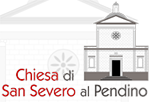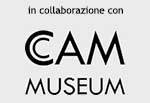
The dawn of Kac
Storytelling in images is something that, in human culture, we take for granted is natural; after all, the horses depicted on the walls of the Lascaux caves, or the bison in those of Altamira, are testimony - and therefore narration - from the Paleolithic world. This narrative need has always had great strength, and it is therefore quite natural, coherently, that men have for this purpose a favorite representation, the representation (gradually more and more faithful and refined) of reality. The use of figures as a narrative medium is, therefore, part of our cultural imprinting.
This connection has been strengthened more and more, as painting, sculpture and mosaic became more and more mature, and man learned to master more and more the different techniques to reproduce reality figuratively - but, also, to represent visually what it is not possible to copy from life': gods, chimeras, fantastic landscapes ...
At the same time, man has also always used 'abstract signs (\"obtained by abstraction, and therefore without correspondence with objective reality and with the data of sensible experience\"), but - as far as we know - for decorative and / or symbolic, not descriptive / narrative. In the same caves of Lascaux, most of the cave paintings are indeed abstract signs. Obviously we don't know what sense our predecessors attributed to it, but they certainly must have had one. Figuration and abstraction, therefore, are both part of our visual expressive language, and since the dawn of time.
In much more recent times, forms of self-censorship have also appeared on the use of figuration (think of Islam, which in the Sunna prohibits believers from representing human or animal figures, as an - extreme - form of prevention of idolatry; and which, conversely, has favored a sophisticated development of non-figurative visual expressions, such as Islamic calligraphy and arabesque).
Art has therefore been for millennia an instrument of figurative narration, to tell the story of the gods, heroes, powerful people ...
The process of desacralization of society, the profound change in its traditional class composition, as well as the dizzying development of knowledge, then went to affect the nature of this relationship between visual art and society, as well as the intrinsic characteristics of this art form. The birth of the merchant bourgeoisie and the discovery of perspective, the artist's release from a celebratory commission and progress in the optical field ...
All this favors on the one hand the emergence of a figurative art that is no longer narrative, but 'only descriptive (landscape painting), and on the other hand a formal research by the artists, who, starting from figuration, detach themselves from it. more and more: impressionism, pointillism, cubism ... Abstract art first, then conceptual art, will sanction the separation between visual art and its narrative function.
When the 17th century Romans entered S. Luigi dei Francesi, they recognized episodes from the life of Saint Matthew in the three Caravaggesque canvases, although they obviously never witnessed them, because they were stories they had already heard. Similarly, those who see Picasso's Guernica recognize its historical and symbolic links, as he knows the historical episode of the Spanish Civil War. But, if we try to imagine, in both cases, an unaware public, the outcome would be quite different: the seventeenth-century faithful would still understand that it is the story of a saint, while the other observer would be very perplexed.
Non-figurative art either has an extraordinary expressive power, or it needs a contextualization.
Because culturally, we humans expect to find something we recognize in visual art. We expect some narration. And this, in my opinion, is one of the reasons for the extraordinary success of cinema.
This gap between contemporary visual art (or rather, a large part of it) and the cultural sensitivity of society is one of the causes why art has lost its aura, its social function, and today it is predominantly goods.
One could say, with a joke, that today we have gone from the aura to the euro. Certainly, today no value is recognized in the work of art that is not primarily economic.
Obviously, commodification has accentuated the privatization process, which basically means removing art from public use. The same exhibition 'passages' in museums constitute an enhancement step for contemporary art.
In turn, therefore, this genetic mutation of art, as well as its loss of a narrative function, has done nothing but deepen the disconnection between art and the socio-cultural context.
On the other hand, the dawn of a new world is dawning. Indeed, perhaps its sun is already high, but we do not yet see the light well.
The extraordinary change that the algorithmic era of Big Data is producing is just the tip of the iceberg. The power and speed of calculation of modern processors allow, for example, architectural revolutions that were unthinkable only a few years ago. Not to mention biotechnologies, which pave the way for the transition from the era of cyborgs (now historicized, since mechanical prostheses have been implanted on human bodies for years) to that of chimeras, transgenic living beings, endowed with multispecies characteristics.
And, of course, art too is - as they say - \"on the piece\"; artists who work on a redefinition of the relationship between man and data, but also - through data - of the relationship between man and nature. Artists who use artificial intelligence to push their research further. Artists who intervene on biological nature.
The udatinòs project (by Oriana Persico and Salvatore Iaconesi), at the mouth of the Oreto river, \"involves the creation of an interactive work of art that generates plays of light and sound to visualize and represent the conditions of the environment (water and air ) in Palermo, thanks to the possibility of linking the work of art to data from sensors, open data and surveys \".
The artistic experiment GFP Bunny (2000), by the Brazilian artist Eduardo Kac, realized thanks to the collaboration with some scientists, represents the first example of transgenic art (\"the creation of a complex organic living being, totally artificial, for artistic \"). An albino rabbit, called Alba, was created by a synthetic mutation of the GFP gene of the fluorescence of the Aequorea Victoria jellyfish; the result was a white rabbit that, when exposed to a particular light, becomes fluorescent and glows with green light. Alba was a chimeric animal, which does not exist in nature (by chimeric those that in the cultural tradition are considered imaginary animals, and not in the scientific sense of the term of an organism composed of cells containing different genomes).
These new forms of art forcefully return to the narrative function, on the contrary they make the dialogue with the public their foundation. They question the public, narrating the present and the future in an artistic form. They tell us about the world we are entering - unfortunately without being fully aware of it - and they also tell us how we can change its direction.
And never as now saying public does not simply mean the viewer, who indeed wants to interact with it, but must be understood as a collective, social dimension.
Today more than ever, we need an art that reopens dialogues, that returns us to the dimension of citoyen, and not (only) of consumer.[
Enrico Tomaselli / 2021-10-25]
<< back




